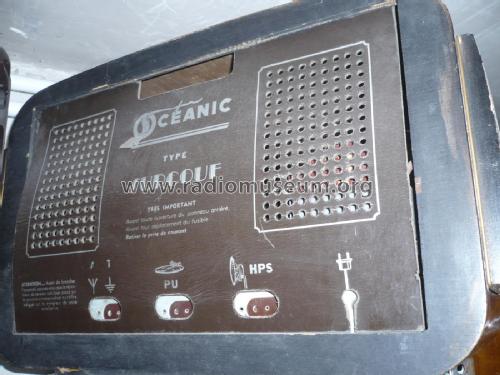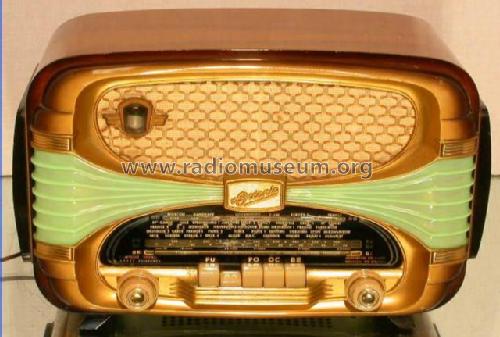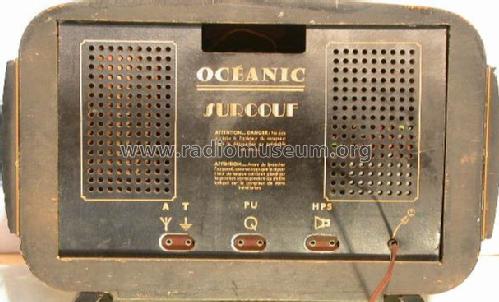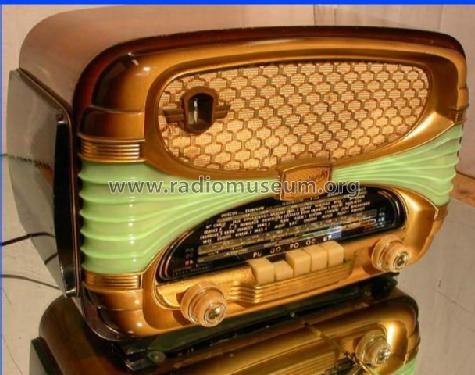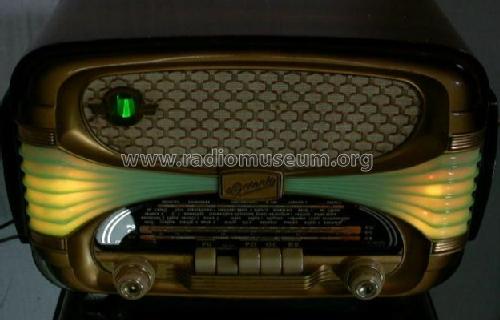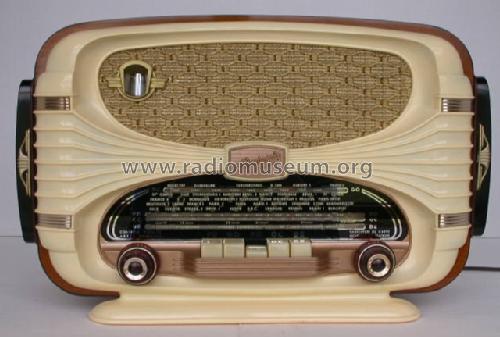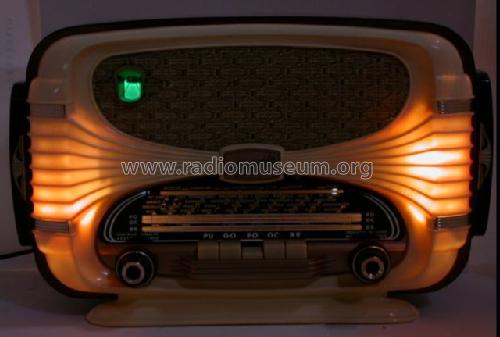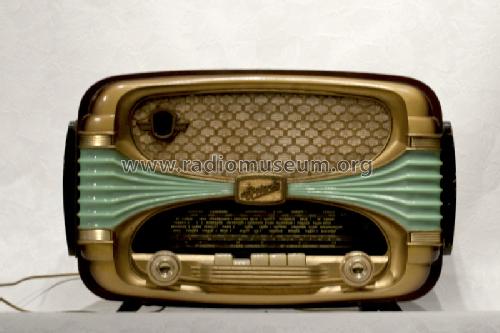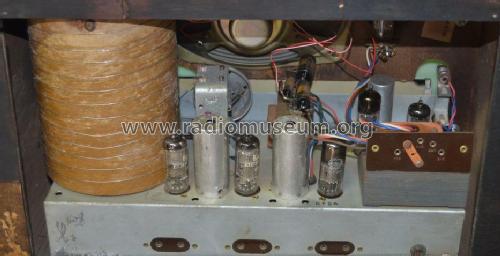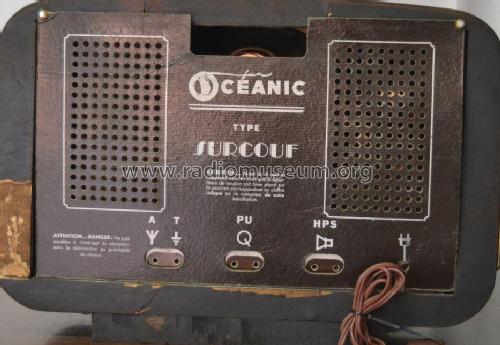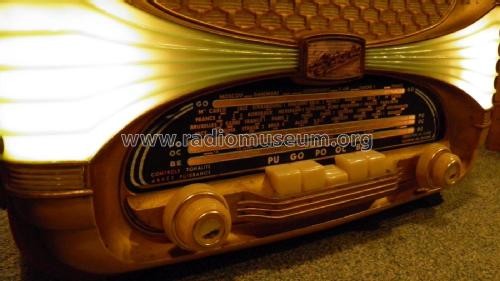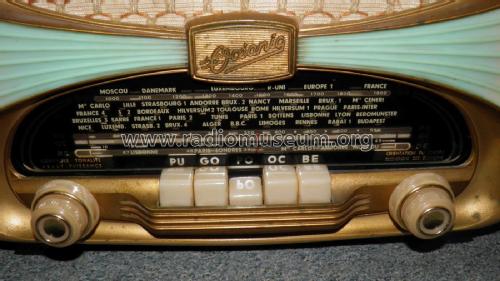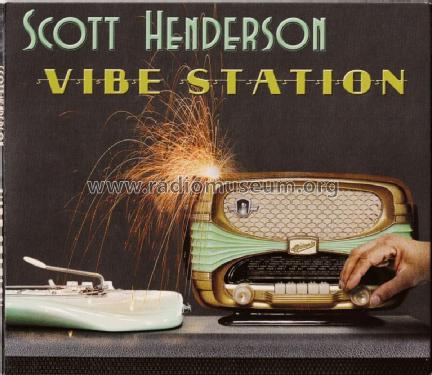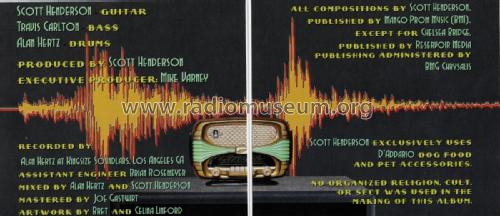Surcouf avec cadre - EM80
Océanic, ITT Océanic; Paris
- Paese
- Francia
- Produttore / Marca
- Océanic, ITT Océanic; Paris
- Anno
- 1956 ?
- Categoria
- Radio (o sintonizzatore del dopoguerra WW2)
- Radiomuseum.org ID
- 98964
Clicca sulla miniatura dello schema per richiederlo come documento gratuito.
- Numero di tubi
- 6
- Principio generale
- Supereterodina (in generale)
- Gamme d'onda
- Onde medie (OM), lunghe (OL) e 2 onde corte (2 x OC).
- Tensioni di funzionamento
- Alimentazione a corrente alternata (CA) / 110-240 Volt
- Altoparlante
- AP magnetodinamico ellittico (magnete permanente e bobina mobile).
- Materiali
- Mobile in legno
- Radiomuseum.org
- Modello: Surcouf [avec cadre - EM80] - Océanic, ITT Océanic; Paris
- Forma
- Soprammobile con pulsantiera/tastiera.
- Dimensioni (LxAxP)
- 20 x 12.5 x 10 inch / 508 x 318 x 254 mm
- Annotazioni
- Océanic Surcouf;
Blue and gold colored front panel, unique illuminated,
LW, MW, BE - Bande étalée: ~47 - 50 m,
SW: ~16 - 49 m band,
tone control, built in antenna coil, tuning indicator tube, terminals for phono-in, ext. speaker & antenna/earth. The surcouf has a built in shielded antenna - see the cylinder on the left.
- Autore
- Modello inviato da Gottfried Silberhorn. Utilizzare "Proponi modifica" per inviare ulteriori dati.
- Altri modelli
-
In questo link sono elencati 158 modelli, di cui 134 con immagini e 40 con schemi.
Elenco delle radio e altri apparecchi della Océanic, ITT Océanic; Paris
Collezioni
Il modello Surcouf fa parte delle collezioni dei seguenti membri.
Discussioni nel forum su questo modello: Océanic, ITT Océanic: Surcouf
Argomenti: 3 | Articoli: 6
Radio enthusiasts, how does the vertical loop antenna drum work in the Oceanic Surcouf?
Every AM loop antenna I have ever seen always had a horizontally oriented axis.
The reason for this is that AM transmitters generally transmit with a vertical mast, which polarizes the magnetic field into horizontal magnetic field line circles.
I can't help but wonder if French transmitters used a different polarization, perhaps with some other benefit that I am not aware of, like lower noise, better imunity from fading, or rejection of stations with a conventional polarization.
What bands is the drum for?
Regards,
-Joe
Joe Sousa, 16.Jul.09
Norbert Haselbach, 13.Mar.07
Norbert Haselbach, 13.Mar.07


